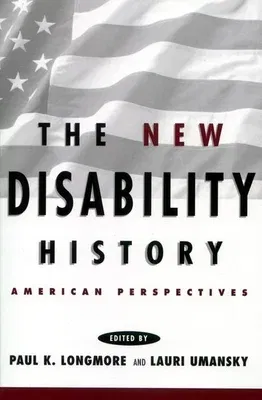A collected volume highlighting disability's hidden history in
American society
Disability has always been a preoccupation of American society and
culture. From antebellum debates about qualification for citizenship to
current controversies over access and reasonable accommodations,
disability has been present, in penumbra if not in print, on virtually
every page of American history. Yet historians have only recently begun
the deep excavation necessary to retrieve lives shrouded in religious,
then medical, and always deep-seated cultural, misunderstanding.
This volume opens up disability's hidden history. In these pages, a
North Carolina Youth finds his identity as a deaf Southerner challenged
in Civil War-era New York. Deaf community leaders ardently defend sign
language in early 20th century America. The mythic Helen Keller and the
long-forgotten American Blind People's higher Education and General
Improvement Association each struggle to shape public and private roles
for blind Americans. White and black disabled World War I and II
veterans contest public policies and cultural values to claim their
citizenship rights.
Neurasthenic Alice James and injured turn-of-the-century railroadmen
grapple with the interplay of disability and gender. Progressive-era
rehabilitationists fashion programs to make crippled children
economically productive and socially valid, and two Depression-era
fathers murder their sons as public opinion blames the boys' mothers for
having cherished the lads' lives. These and many other figures lead
readers through hospital-schools, courtrooms, advocacy journals, and
beyond to discover disability's past.
Coupling empirical evidence with the interdisciplinary tools and
insights of disability studies, the book explores the complex meanings
of disability as identity and cultural signifier in American history.

